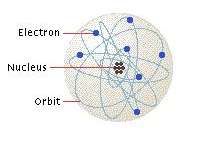How Much Do Atoms Weigh?
The ability to weigh atoms came about by an observation from an Italian chemist named Amadeo Avogadro. Avogadro was working with gases (nitrogen, hydrogen, oxygen, chlorine) and noticed that when temperature and pressure was the same, these gases combined in definite volume ratios. For example:
- One liter of nitrogen combined with three liters of hydrogen to form ammonia (NH3)
- One liter of hydrogen combined with one liter of chlorine to make hydrogen chloride (HCl)
Avogadro said that at the same temperature and pressure, equal volumes of the gases had the same number of molecules. So, by weighing the volumes of gases, he could determine the ratios of atomic masses. For example, a liter of oxygen weighed 16 times more than a liter of hydrogen, so an atom of oxygen must be 16 times the mass of an atom of hydrogen. Work of this type resulted in a relative mass scale for elements in which all of the elements related to carbon (chosen as the standard -12). Once the relative mass scale was made, later experiments were able to relate the mass in grams of a substance to the number of atoms and an atomic mass unit (amu) was found; 1 amu or Dalton is equal to 1.66 x 10-24 grams.
Advertisement
At this time, chemists knew the atomic masses of elements and their chemical properties, and an astonishing phenomenon jumped out at them!
